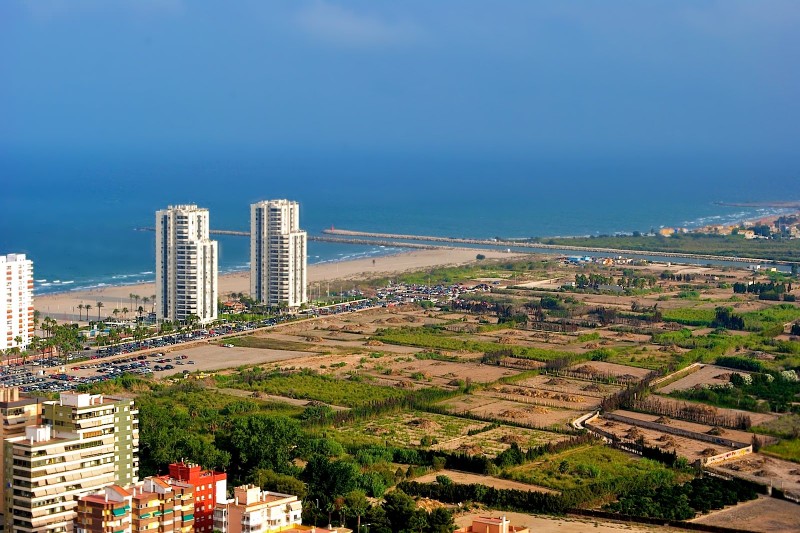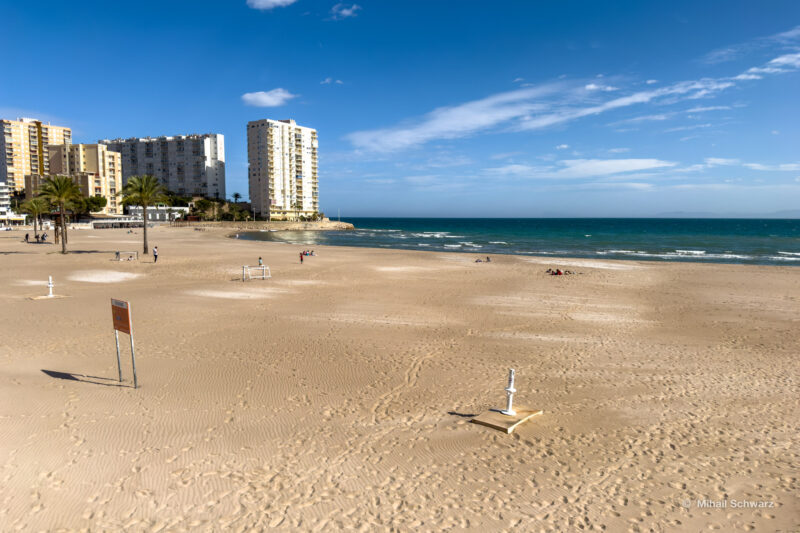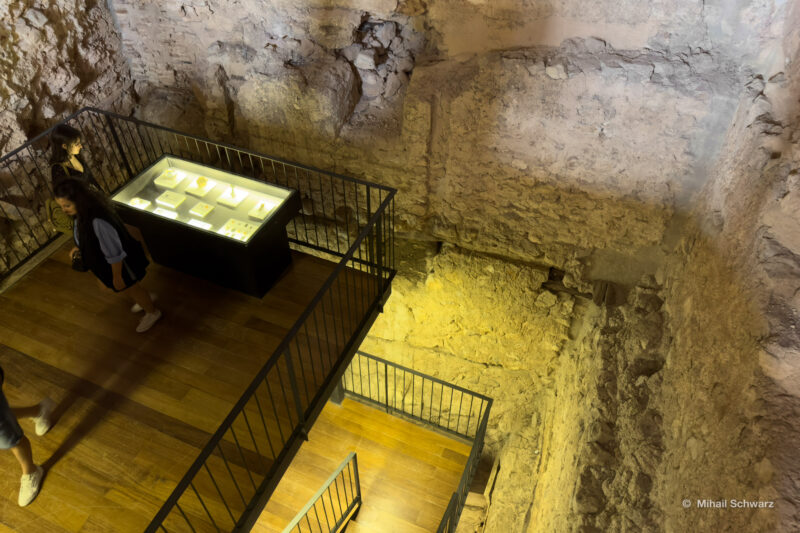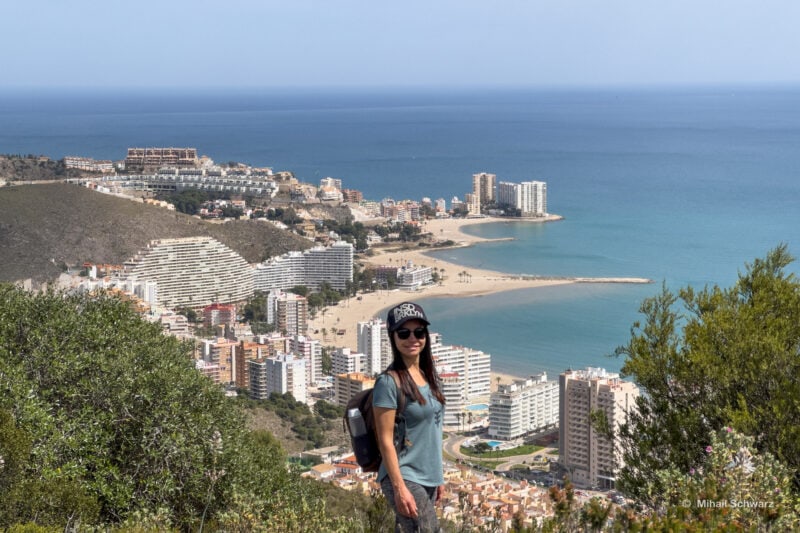
Cullera is a small resort town with excellent beaches, surrounded by rice fields, orange groves, and vineyards, popular with both families and youth groups. The Medusa music festival is also held here.
Mount Raboses (Muntanya de les Raboses) shelters the city from sharp continental winds. Even in winter, it is sunny and warm here. In summer, thanks to the constant fresh breeze, the temperature doesn’t rise above 95°F.
Since the mid-20th century, Cullera has been actively developing as a tourist center. The town, calm during the day, comes alive at night when numerous bars and discos start working.
Beaches
In the vicinity of the city, there are 11 beaches—clean, covered with golden sand. Most of them are awarded the Blue Flag. Cap Blanc is the central beach, the most crowded. It is chosen by water sports enthusiasts. Playa del Faro is preferred by divers; Marenyet Beach is popular with surfers. Swimming is practically uninterrupted: in summer, the water temperature reaches 81°F; in winter, it doesn’t drop below 63°F.
Beach Map
Mareny de Sant Llorenç Beach
Dosel Beach
Faro Beach
Los Olivos Beach
Cap Blanc Beach
Racó Beach
San Antonio Beach
Escollera Beach
Marenyet Beach
Estany Beach
Brosquil Beach (Dorado and Silencio)
History

The history of Cullera begins in the Upper Paleolithic era. In the historic center of the city, archaeologists find traces of settlements from different periods.
During the Arab period, a castle appeared on the southern slope of the mountain, and a fortified settlement was established. Jaime I reconquered it in 1239. Under the Christians, the city grew and became an important trading port. The architectural flourishing period occurred in the 17th–18th centuries; in the 19th century, rice cultivation expanded in the surroundings of Cullera, irrigated by the Júcar River. During this time, many new buildings were constructed, shaping the city’s appearance.
White houses rise in steps up the mountain slope. Along the coast stretches a spacious six-kilometer-long promenade, with a series of high-rise hotels lining the path parallel to the promenade.
Map of Cullera’s attractions
Cullera Castle-Fortress
Tower of the Moorish Queen
Tower of Marenyet
Barrio del Pozo
Church of the Santos Juanes
Church of the Blood of Christ
Consistorial House
City Market
Lighthouse
Pirate Dragut's Cave Museum
Rice Museum
Museum of History and Archaeology
Landmarks
Cullera Castle
The Castle-Fortress of Cullera (Castillo del Cullera) rises on a hill above the historic center. It was built in the 10th century during the Cordoban state period to control the city’s coastline and the mouth of the Júcar River. In the 13th century, the castle fell into Christian hands.
The fortress consisted of the Alcazaba (main castle) and two Albacars, which served as a refuge for troops, horses, cattle, and locals during sieges, as well as 5 towers connected by a fortress wall. Throughout its history, the castle underwent numerous changes. Today, only a small section in the west and 5 towers remain of the defensive structures. The castle now houses the Cullera Municipal Museum of History and Archaeology (Museo de Historia y Arqueología). Its exhibits and multimedia presentations tell the story of the city. In the summer, theatrical performances and various shows are held in the castle.
In 1631, a chapel of St. Anne was built on the ruins of the Moorish Queen Tower (Torre de la Reina Mora), which in the 13th century was part of an Islamic fortress. After recent restoration, the structure has regained its original appearance.
The conical Watchtower of the 16th century, Marenyet (Torre del Marenyet), built to protect against Berber attacks during Philip II’s reign, has been fully restored. The tower’s observation deck offers a view of the bay, the mouth of the Júcar, and rice fields.
Well Quarter
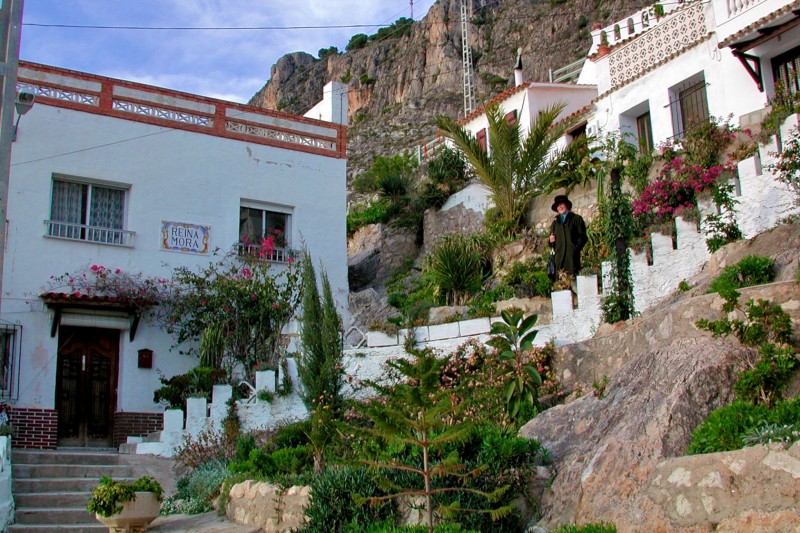

It’s interesting to stroll through the old quarter of the city – Barrio del Pozo or the Well Quarter. Its narrow streets have retained almost unchanged their appearance since Islamic times, and the whitewashed houses are decorated with tiles and graceful balconies draped in vines.
The Road to Golgotha

From the Well Quarter past the city market runs a white road – the Way of the Cross (El Camino del Calvario, camino blanco), symbolizing Christ’s ascent to Golgotha. Along its entire length, there are fourteen prayer stations. At the end is the Sanctuary of the Virgen del Castillo. This picturesque path was created in the 19th century. As you climb, you will see a panorama of the city and the sea.
Sanctuary of the Virgen del Castillo
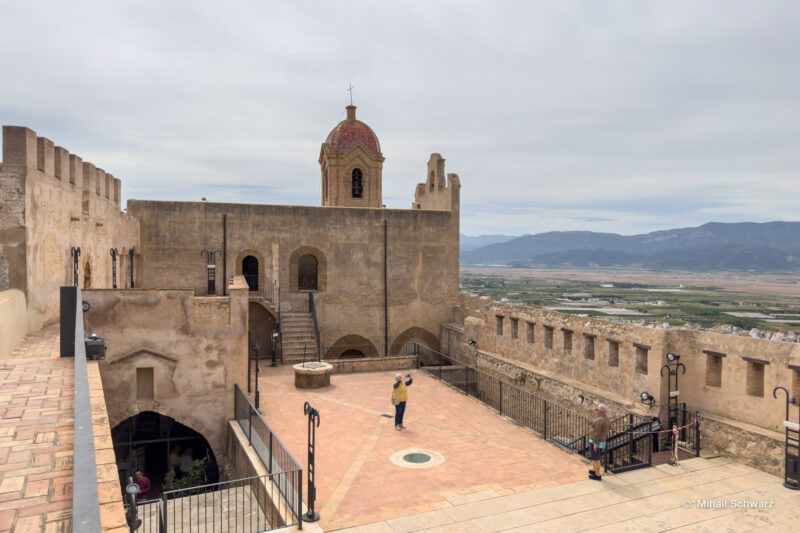
The Sanctuary of the Virgen del Castillo (Santuario de la Virgen del Castillo), the city’s patroness, is located near the fortress. Inside, art objects and church treasures are kept. The temple was built in the 19th century in the Neo-Byzantine style.
Church of Saints John

In the historic center on Church Square stands the Church of Saints John (Iglesia parroquial Santos Juanes). It was built in the Gothic era and reconstructed in the Neoclassical style in the 18th century.
Church of the Blood of Christ

The Church of the Blood of Christ (Iglesia de la Sangre de Cristo) has existed since 1616. This building is shaped like a Latin cross with a rectangular bell tower and a beautiful blue dome. The church stands below the level of the surrounding streets, and a staircase leads to it.
Consistory
The Consistory (Casa Consistorial), built in the style of Italian palaces, has existed since 1781. The luxurious Meeting Hall is considered the center of this building.
City Market

The center of Cullera’s «secular» life is considered to be the city market (Mercado). It consists of four specialized pavilions built in the modern style. Each of these structures is dedicated to certain types of products. The market also serves as a common meeting place and a corner of relaxation for locals and visitors.
Lighthouse
The snow-white Cullera Lighthouse (Faro de Cullera) stands on the coast at Punto del Faro. It was built in 1858.
Pirate Dragut Museum

At the foot of the Faro Lighthouse, there is a unique cave museum of Pirate Dragut (Museo temático de la Piratería “Cueva-Museo del pirata Dragut”) – emissary of Red Beard. Its exposition illustrates the history of piracy and seafaring. To reach the museum, you need to climb from Doctor Fleming Square.
Rice Museum

The unique Rice Museum (Museo del Arroz), the only one in the Valencia area, is located in the restored old chapel of Saints Abdon and Senen. Here, tools, instruments, and old photos are displayed.
Map of Cullera
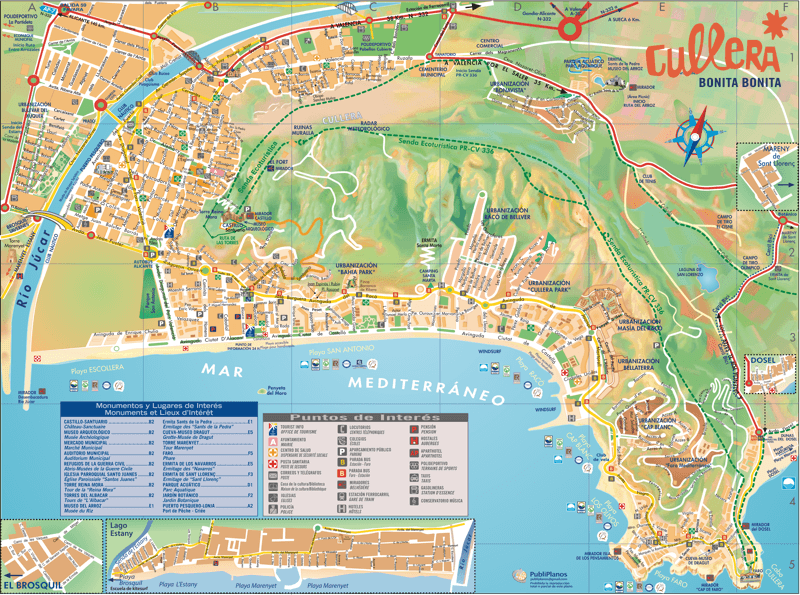
Events, festivals, activities

In Cullera, traditional Valencian and local festivals are celebrated.
In March, the Las Fallas festival of fire is held with the burning of effigies during La cremà night – March 19.
In June, bonfires once again blaze on Cullera’s beaches – on «Saint John’s Night,» residents come to the coast to make wishes.
Holy Week begins with Palm Sunday. City guilds organize vibrant theatrical processions.
The Festivity of the Holy Virgin del Castillo is held on the Saturday following Easter. A colorful event with parades and fireworks lasts a week.
Saint Anthony Abbot’s Day is celebrated on January 17.
Outside of festival days, numerous cultural events also take place in Cullera: youth theater and theater comedy festivals, the annual historical conference, concerts and exhibitions, photography competitions, and literary award ceremonies.
How to travel from Valencia to Cullera?


The nearest airport to the city of Cullera is Valencia Airport.
You can travel from Valencia to Cullera by train, from Valencia Nord station. The journey to Cullera takes 36 minutes, and a one-way ticket costs from €7.
There are also ALSA company buses from Valencia to Cullera. It takes just over 1 hour. Tickets cost from €9. Buy a bus ticket → here.
- Кульера
- Cullera
- Адрес: Valencia, Испания
- site
- GPS: 39,163729 -0,253397




